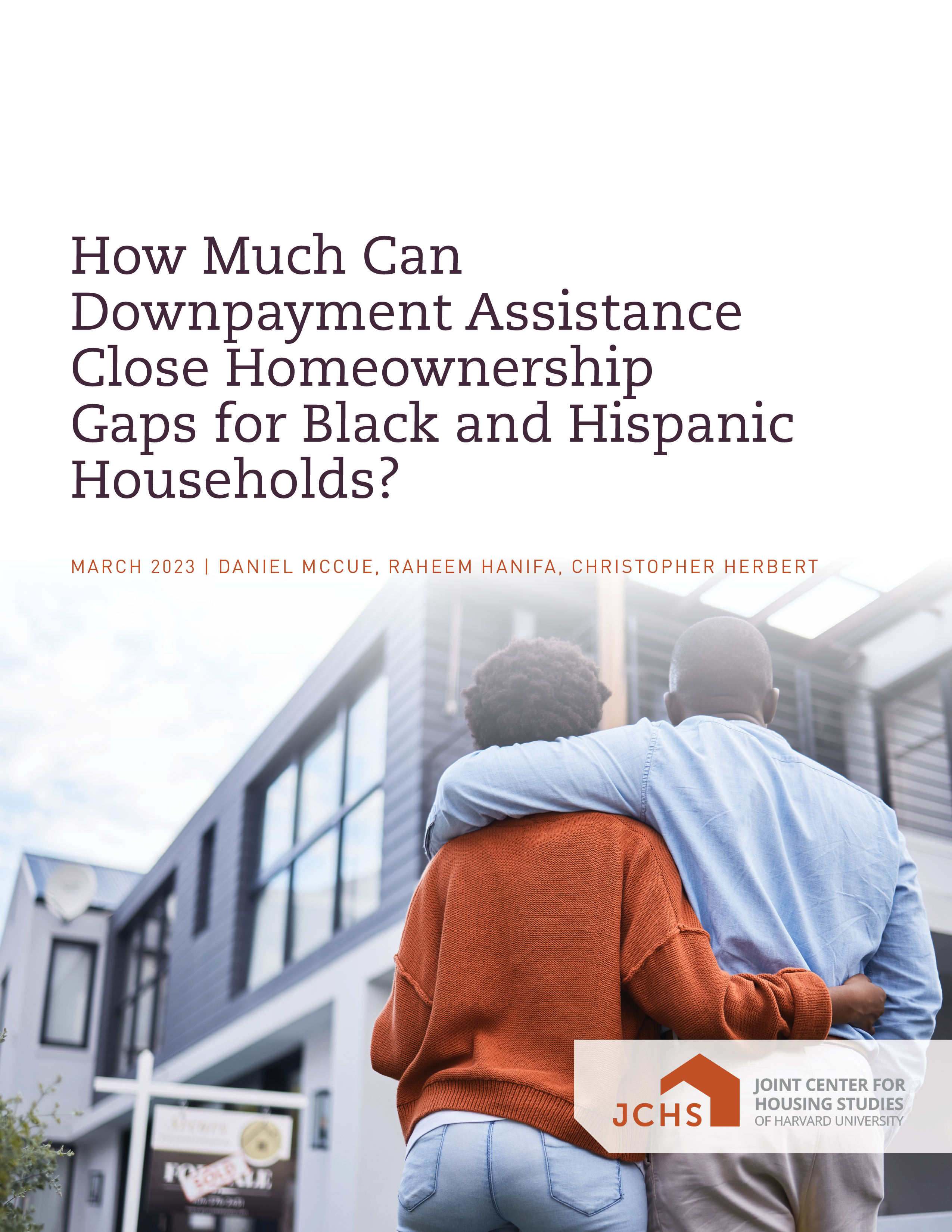How Much Can Downpayment Assistance Close Homeownership Gaps for Black and Hispanic Households?
The persistently wide homeownership rate gaps between Black, Hispanic, and white households mean that households of color are disproportionately excluded from the many potential financial and social benefits of homeownership. These inequalities did not appear overnight but rather are the result of past and present policies and racist housing practices that specifically excluded non-white households from owning homes. Addressing these inequalities calls for new policies and programs to support homeownership for these historically disadvantaged households. Downpayment assistance is one such program that has the potential to overcome a lack of savings, which is one of the most significant barriers to buying a home and is a consequence of the historical barriers to homeownership among people of color.
There has been growing interest in expanding downpayment assistance efforts, with a notable example being the Downpayment Toward Equity Act of 2021 that would have provided up to $25,000 in downpayment assistance for first-generation homebuyers. The purpose of this paper is to assess how many Black and Hispanic renters would be able to purchase a home in their market area with this level of assistance. The goal is to evaluate how much of the current shortfall in homeownership relative to white households might be closed through such a program and in what geographic areas this level of assistance would be most effective.
Employing standard underwriting assumptions for a mortgage backed by the Federal Housing Administration, this study finds that $25,000 in assistance would, indeed, be enough to cover the required minimum 3.5 percent downpayment on a home priced at 80 percent of the median home price in every state except Hawaii. This assistance could potentially make homeownership possible for 1.1 million income-ready Black and Hispanic renter households in the prime first-time homebuying ages of 25-55. If each of these 700,000 Black and 400,000 Hispanic households were to purchase a home, Black and Hispanic homeownership rates nationwide would rise by 8.0 percentage points and 3.2 percentage points, respectively. These significant increases in the Black and Hispanic homeownership rates would, however, still be just a partial reduction in the Black-white and Hispanic-white homeownership rate gaps of 31.8 and 20.6 percentage points, respectively, for households in this age group as measured by the 2021 ACS.

